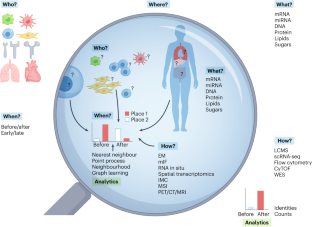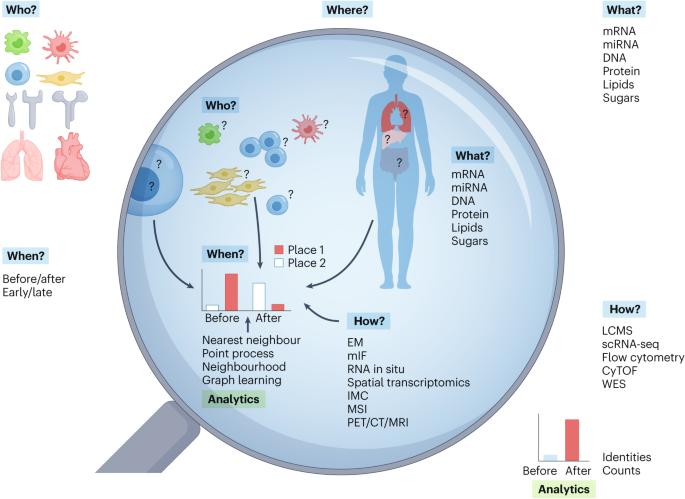Spatial multiplexing and omics
IF 56
Q1 MULTIDISCIPLINARY SCIENCES
引用次数: 0
Abstract
Much like solving a game of Clue, understanding physiological mysteries involves answering who, what, when and where. Multiomics approaches delve into cellular and molecular identities (the who and what), whereas longitudinal data collection addresses the when. Spatial dimensions address the where. This Primer discusses current technologies enabling quantification across biological scales, emphasizing the importance of retaining the spatial dimension of that data. We outline experimental design considerations, including targeted versus untargeted approaches, sample types, biological scale and four main classes of molecule detection. Spatial analytics are explored, covering questioning approaches, analytical platforms, image segmentation and sampling. Example applications, reproducibility considerations, limitations and our outlook for the future are provided. Our goal is to unite spatial platforms and biological scales that not commonly brought together to encourage collaboration and innovation between diverse biological fields, offering a conceptional framework and an apples-to-apples comparison for understanding major technologies to foster cross-disciplinary dialogue. Spatial multiomics is an interdisciplinary field combining all molecular omics using advanced imaging techniques to explore interactions within tissues and cells. In this Primer, Carstens et al. examine current technologies for quantification across biological scales and discuss considerations for establishing cross-disciplinary projects.


空间多路复用和全息技术
就像解谜游戏一样,了解生理奥秘需要回答 "谁"、"什么"、"何时 "和 "何地"。多组学方法深入研究细胞和分子特性(谁和什么),而纵向数据收集则解决时间问题。空间维度解决了 "在哪里 "的问题。本《入门指南》讨论了当前可实现跨生物尺度量化的技术,强调了保留数据空间维度的重要性。我们概述了实验设计的注意事项,包括靶向与非靶向方法、样本类型、生物尺度和四类主要分子检测。我们还探讨了空间分析,包括提问方法、分析平台、图像分割和取样。还提供了应用实例、可重复性考虑因素、局限性以及我们对未来的展望。我们的目标是将不常见的空间平台和生物尺度结合起来,鼓励不同生物领域之间的合作与创新,提供一个概念框架和苹果与苹果的比较,以了解主要技术,促进跨学科对话。
本文章由计算机程序翻译,如有差异,请以英文原文为准。
求助全文
约1分钟内获得全文
求助全文

 求助内容:
求助内容: 应助结果提醒方式:
应助结果提醒方式:


